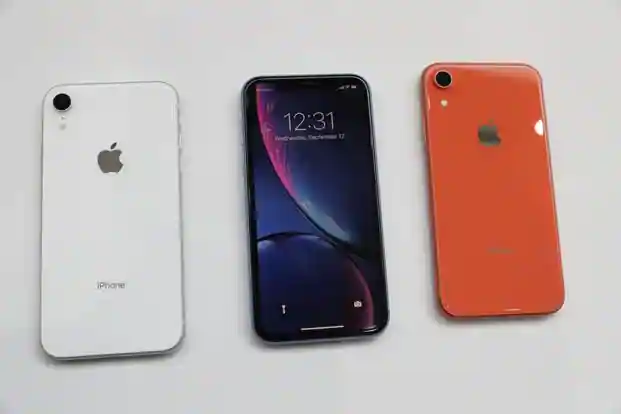
From MKV to MP4: The Ultimate Conversion Tutorial
The format of your video files can significantly impact where and how you can play them. MKV and MP4 are two of the most commonly used video formats, each with their specific advantages and uses. MKV, known as Matroska Video, is favored for its ability to hold an unlimited number of video, audio, picture, or subtitle tracks in one file. MP4, or MPEG-4 Part 14, is ubiquitous in its compatibility across a wide range of devices and platforms. This tutorial is your comprehensive guide on how to convert MKV to MP4, ensuring your videos are playable wherever you want.
Understanding Video Formats: Distinguishing Between MKV and MP4
Introduction to MKV
MKV, which stands for Matroska Video, is a versatile, open-standard container format that does not impose any restrictions on data size, allowing it to hold unlimited amounts of video, audio, and subtitle tracks, along with extensive metadata. This capability makes it exceptionally suitable for archiving feature films, episodic television, and similar multimedia content that benefits from multiple audio tracks (such as different languages) and sets of subtitles. The format is named after the Russian matryoshka dolls, symbolizing its ability to contain multiple layers of media within a single file. MKV is highly regarded for its ability to support a variety of different encoding formats, maintaining high-quality video and audio without compromising the integrity of the original content.
Exploring MP4
MP4, or MPEG-4 Part 14, is a digital multimedia container format widely embraced due to its compatibility across a vast array of devices and media players. Predominantly used to store video and audio files, MP4 can also safely contain other types of data such as text for subtitles and still images. Its structure is part of the MPEG-4 standard under the ISO/IEC standard 14496-14, a guideline that also supports other forms of multimedia presentations such as 3D graphics, menus, and user interactivity. This format’s widespread adoption can be attributed to its ability to compress files while maintaining a balance between file size and video quality, making it ideal for use in streaming applications, broadcasting, and personal media players. MP4’s versatility and efficiency in handling digital video and audio make it a preferred choice for both amateur and professional use, promoting easier sharing and distribution of multimedia at a global level.
The key difference between MKV and MP4 lies in their usability and compatibility. While MKV is superior for storage and maintaining quality with support for various codecs, MP4 offers greater compatibility, ensuring that multimedia content can be played back on virtually any device. This fundamental difference influences user choice based on their specific needs—whether it is for comprehensive archival with high-quality playback, as seen with MKV, or for general consumption and distribution, as is typical with MP4. Understanding these formats helps users make informed decisions about how to best store and distribute their digital media, ensuring accessibility and quality preservation according to their requirements.
The Need for Converting MKV to MP4: A Focus on Compatibility
The principal rationale for converting video files from MKV to MP4 centers on enhancing compatibility. MKV, with its robust structure, excels as a format for video archiving thanks to its adaptability and ability to house an extensive array of metadata along with multiple streams of audio and video content. This makes it an ideal choice for storing complex multimedia files like feature films or concert videos that may require multiple language tracks and subtitles. However, the high functionality of MKV comes at the cost of limited compatibility across various devices and media players.
In contrast, MP4’s broad acceptance across nearly all platforms makes it an indispensable format in the realm of digital media. Its compatibility extends to a vast spectrum of devices, from modern smartphones and tablets to conventional desktops and even standard software media players used in everyday home entertainment systems. This universal support ensures that media in MP4 format can be easily accessed, shared, and viewed without the need for additional software or conversions.
Converting MKV files to MP4 is therefore a strategic move to maximize the accessibility of your video content. This transformation not only ensures that videos are playable on the widest possible range of devices but also facilitates easier uploading to social media and video streaming services, which predominantly support MP4 files. Additionally, MP4 files are often smaller in size compared to MKV, which can be beneficial for storage and bandwidth usage, especially when dealing with large volumes of video files. Thus, while MKV may be superior for archival purposes due to its capacity to preserve quality and include rich metadata, MP4 stands out as the more practical choice for everyday use and distribution, making the conversion a necessary step for those looking to share their content more broadly.
How to Convert MKV to MP4
Converting your MKV files to MP4 format can be accomplished through various methods. Whether you prefer using desktop software or online services, this guide covers everything you need to know to perform the conversion.
Method 1: Using Desktop Software
Step 1: Select a Video Converter
Several reliable video converters are available for free or purchase. Popular options include:
- VLC Media Player: Known primarily as a media player, VLC also offers powerful conversion capabilities.
- Handbrake: An open-source video transcoder that is very versatile.
- Movavi Video Converter: A user-friendly interface ideal for beginners.
Step 2: Install and Launch the Software
Download the converter from a trusted source and install it on your computer. Launch the program once installation is complete.
Step 3: Import the MKV File
In the program interface, look for an option to add or import media and select your MKV file.
Step 4: Choose Output Format
Navigate to the settings or options menu where you can select the output format. Choose MP4 as your target format.
Step 5: Configure Conversion Settings
Most conversion software will allow you to modify settings like bitrate, resolution, and codec. Customizing these settings can help you maintain the quality of the video while ensuring compatibility.
Step 6: Convert the File
Click the convert, start, or run button to begin the conversion process. The time it will take depends on the original file size and the settings chosen.
Step 7: Test the Output
After the conversion is complete, play the MP4 file to ensure it works correctly on your intended device or player.
Method 2: Using Online Converters
Online converters are a convenient choice if you do not want to download software. Here’s how to use them:
Step 1: Choose an Online Converter
Select a reliable online converter that supports MKV to MP4 conversions, like CloudConvert or Zamzar.
Step 2: Upload Your File
Visit the converter’s website and upload your MKV file. Be aware that most online converters will have a maximum file size limit.
Step 3: Set MP4 as the Output Format
Ensure that MP4 is selected as the output format.
Step 4: Convert and Download
Start the conversion. Once complete, download the MP4 file to your device.
Conclusion
Whether you choose a desktop application or an online tool, converting MKV to MP4 is a straightforward process that will make your videos more accessible and usable across a variety of platforms and devices. By following the steps in this tutorial, you can ensure your media is ready for playback anywhere, preserving the quality while increasing compatibility.





